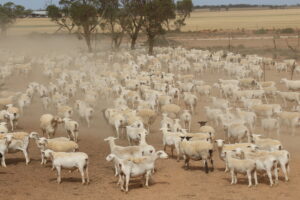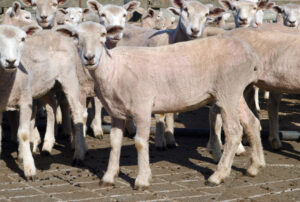The possible banning of the live sheep export trade, an election promise from the current government, has been making plenty of political headlines. But from an industry point of view, it’s been a while since we looked at how live export numbers are faring on the back of that announcement last year. The trade got off to a cracking start in 2023, with 100,000 head shipped out in January. The trade hasn’t kept up the pace, however, with less than 500 head leaving in February.
Live sheep export numbers were down 13% year-on-year for 2022, with slightly more than 502,000 head leaving Australia. It wasn’t a significant drop off from 2021, but historically it set a new low since at least 2008, and it was 40% below the five-year average annual total. Meat and Livestock Australia’s most recent industry projections have live sheep export numbers dropping to 500,000 this year, before lifting marginally each year out to 580,000 in 2025, which would be 16% above 2022 levels. This is a significant walk back from the 650,000 head figure from the previous MLA projections figure for 2023 live sheep export numbers.
Kuwait remained the largest market for live export sheep in 2022, at 36%, but that was down from the 60% of the market share it made up in 2021. Total live sheep exports to Kuwait for the 12 months ending February were down about 40% year-on-year, and for January/February 2023 were down more than 50%. When it comes to the other gulf countries, all of which come under the moratorium of no trade during their summer months, Qatar took two loads of Australian sheep in 2022, which was up from no sheep in 2021 (when the removal of subsidies kicked in) but down 85% from the five-year average. For the year-to-February, UAE trade is down 63%, and Oman 50%.
On the other hand, the trade with Israel has lifted back to pre-pandemic volumes, with nearly 70,000 head received from Australia in 2022, up from less than 48,000 head in 2021. For the year-to-February, numbers to Israel have lifted 79% year-on-year, despite total sheep exported being down 28% in that same period. Apart from Qatar, mentioned above, they were the only market to increase numbers from 2021 to 2022. For the 12 months ending February, exports to Jordan were down 12%, however, the 16,745 head which went there in January was the first they had received in that month since 2019.
What does it mean?
The 2021-2022 year saw WA producers send more live sheep overseas than interstate for the first time since 2018-19, demonstrating that they are still heavily reliant on the industry. Despite an uptick in supply and downward pressure on prices making sheep easier to obtain for the market, there hasn’t been any indication the trade will increase to its prior strength, or anywhere near it.
There is some positivity around growing demand out of the Middle East and North Africa, which makes up 60% of the global live sheep trade, however, with a possible ban looming, it raises the question of which markets will bother to build up business with Australia.
Have any questions or comments?
Key Points
- Live sheep exports ended 2022 down 13% year-on-year, the lowest level since at least 2008.
- Kuwait remains the largest market for live export sheep but has taken 50% fewer Australian sheep for the year-to-February.
- MLA expects live sheep exports to hold relatively firm in 2023, however, they are down 28% for the year so far based on the latest data from February.
Click on figure to expand
Click on figure to expand
Data sources: ABS, MLA, Mecardo














